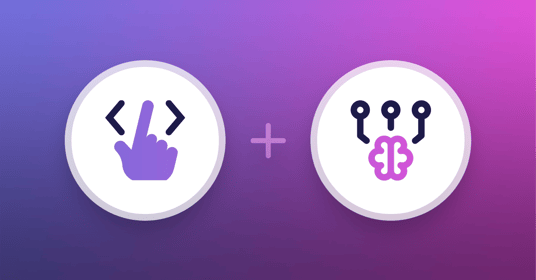Get a Free Trial
Creating, executing, and maintaining reliable tests has never been easier.
One of the most difficult debates in quality assurance and software development is determining the ratio of developers to software testers needed for optimal deployment velocity and quality. Searching for answers, whether it’s on Reddit, Stack Overflow, HackerNoon, or basic search engines might surface ratios like 10 developers to one tester, or 5:2, but none of these are grounded in proven best practices. The variation around team dynamics, product, organizational goals, productivity, and other qualitative factors is simply too great for there to be a widely applicable ratio that guarantees quality and velocity. As more organizations accelerate deployments, automate development pipelines, and compete on their customer experience, the mindset of developers vs QA isn’t enough to succeed.
Successful Development Organizations Balance Productivity and Quality
Popular productivity frameworks like Google’s DORA illustrate the need to balance building new features and products with managing quality. Two of the metrics, deployment frequency and lead time for changes, measure how quickly and consistently a team can bring new innovations to market. In contrast, change failure rates and mean time to restore service measure the quality of development practices. By unifying these seemingly disparate goals into one framework, DORA reflects the wide-ranging demands placed on developers and quality teams.
Give Developers a Safety Net for Innovation with Low-Code Test Automation
In the mindset of the developer to QA ratio, helping engineers overcome these demands means hiring more software testers to perform more tests. While this might be the most straightforward path, it doesn’t give developers the tools and insights to improve product quality and adds friction to shortening development cycles. To help developers continuously improve, they need solutions that allow them to support software testing efforts without taking time away from coding.
Low-code test automation solutions offer a path to faster test creation without excessive time demands. Typically built for citizen developers, low-code tools simplify automated testing for developers and manual testers alike by abstracting away the underlying frameworks so testers can focus on the intent of the test. This allows tests to be created faster and with greater focus.
When developers can quickly create comprehensive end-to-end tests that cover UI and API tests that complement unit tests and integration tests, they have access to greater quality insights that help them balance innovation with quality. In other words, they can improve deployment frequency without hurting change failure rates.
Artificial intelligence further improves developer confidence in automated testing by reducing incidental test failures. New test automation solutions leverage AI to ensure that automated tests run at the correct time and evolve in tandem with the application under test, saving developers valuable time and effort. Developers can support continuous testing and shift-left efforts without being slowed by false test failures and test maintenance down the line, further improving productivity without increasing headcount.
Amplify Existing Quality Expertise with Collaborative Testing
In contrast to developers, quality teams often find themselves working to overcome lingering silos left by Waterfall development practices. Unless quality professionals have the tools to extend the reach of their expertise across the software development life cycle, productivity gains will be limited. Even if a company shifts their developer to QA ratio by growing their quality team.
Software testers, whether manual testers or QA engineers, are essential for improving deployment frequency and decreasing change failure rates. Their unique role in the development organization demands understanding the user experience, development practices, product nuances, and cross-functional collaboration in ways that improve deployment frequency and product quality.
Low-code test automation establishes a shared hub for creating, updating, and scaling software testing strategies in ways that allow everyone to contribute. Manual testers, often focused on the customer experience through exploratory testing, can automate routine tests and learn new CX-focused test automation skills like automated accessibility testing with low-code. QA engineers, like developers, can further expand their impact with comprehensive end-to-end testing that fully captures the user experience. Armed with rich diagnostic data and quality trends, quality engineers can focus more of their efforts on expanding test coverage, collaborating with developers, and integrating automated testing into CI/CD pipelines.
With AI-backed test automation, quality teams can be even more productive. Machine learning and AI can give quality professionals more robust insights into test coverage, ensuring that software testing accurately reflects user needs. Testing is more efficient, saving everyone time and effort, yet reduces the risk of bugs in production.
Collaboration as a Competitive Advantage in Software Development
Improving pipeline productivity as part of DevOps and CI/CD adoption is a long process, but focusing on critical areas of collaboration can help development organizations see value faster. Software testing, with its critical impact on deployment frequency and product quality, has long been a hotly debated topic for evolving development teams. But the old paradigm of balancing quality with velocity, as illustrated by the developer:QA debate, isn’t the right mindset to succeed in the era of digital transformation. Instead, executives need to look for new ways to empower their teams. Low-code and AI are making it possible for quality teams and developers to make the most of their time and talents, benefiting their companies, their customers, and their coworkers.
Explore how low-code test automation helps developers and quality teams improve productivity at mabl Experience! Join our annual quality conference for sessions dedicated to making mabl work for developers, maximizing the ROI of test automation, and unleashing innovation in QA. Save your seat for free!






